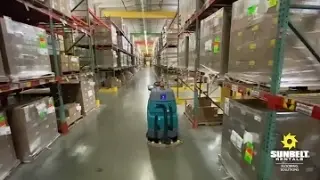Leave Your Message
In the past few years, automation technologies have completely transformed the efficiency and effectiveness of warehouse operations. One of the most significant advancements in this domain is the Floor Scrubber Robots, which contribute to easing the cleaning process rather than letting it be a labor cost. Moreover, valuable productivity gains are made possible through such equipment. According to a report from MarketsandMarkets, the global market for robotic cleaning equipment is expected to reach USD 3.6 billion by 2025, exhibiting a growing trend toward intelligent automation solutions for commercial cleaning. The importance of cleanliness and hygiene is being envisaged and promoted by different organizations, which further increase the foot traffic in warehousing areas that accumulate dirt, launching the needs for Floor Scrubber Robots.
We at Anhui Shuojie Environmental Equipment Co. Ltd. appreciate the importance of incorporating state-of-the-art cleaning technology to fit current industry standards. With this strong commitment towards the manufacturing of high-grade commercial floor scrubbers, sweepers, and vacuum cleaners, Anhui Shuojie is now a leading name in Cleaning Equipment. As more organizations adopt Floor Scrubber Robots, it is therefore very important to understand the applicable industry guidelines that govern their good use. This blog will discuss some helpful hints and pointers for ensuring the successful implementation of these advanced cleaning solutions in warehouses, meeting operational standards while also enhancing safety and efficiency.
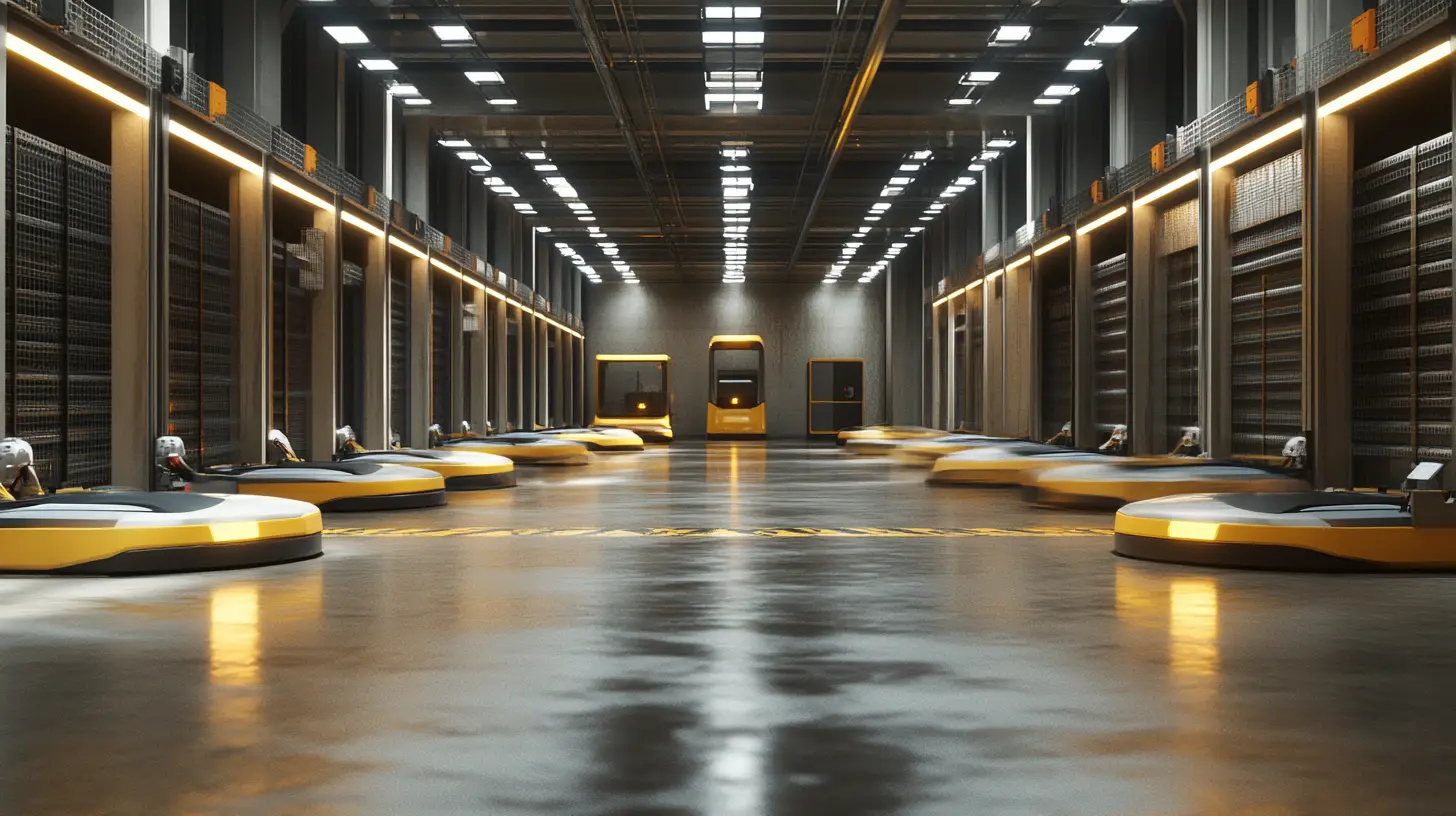
Incorporating washroom robots into warehouse activity is becoming progressively important for greater efficiency and cleanliness. A recent report from the Robotics Industries Association states that the use of autonomous robots is expected to increase 25 percent each year until 2025 in such areas as industrial activities and warehouses. The spike only serves to highlight the need to apply technologies in order to facilitate operations and thus cut labor costs. Among other factors, floor scrubber robotability highly depends on warehouse layout. A clear floor plan allows for good navigation and maximum cleaning coverage. According to the International Warehouse Logistics Association, a working environment free from clutter and obstacles can improve the operational efficiency of robots by as much as 30%. This consideration not only relates to the appropriate setting but also to ensuring that the cleaning robots can work sustainably on their own without being disturbed by daily activities in the warehouse. Thus, clearing up a small space can actually give cleaning robots half the normal amount of time required. The deployment of the floor robots should save warehouse staff, aiding efficiency.It is essential to integrate advanced sensors and data analytics in these scrubbers to deliver real-time information about the cleaning process towards upholding hygiene standards and compliance with the law. Floor scrubber robots constitute the fulfillment of cleanliness requirements and provide additional support in achieving operational objectives by increasing productivity and securing a safer working environment. As this form of technology matures, the warehouses adopting such automated solutions will appear poised for competitive success in ever-faster logistics.
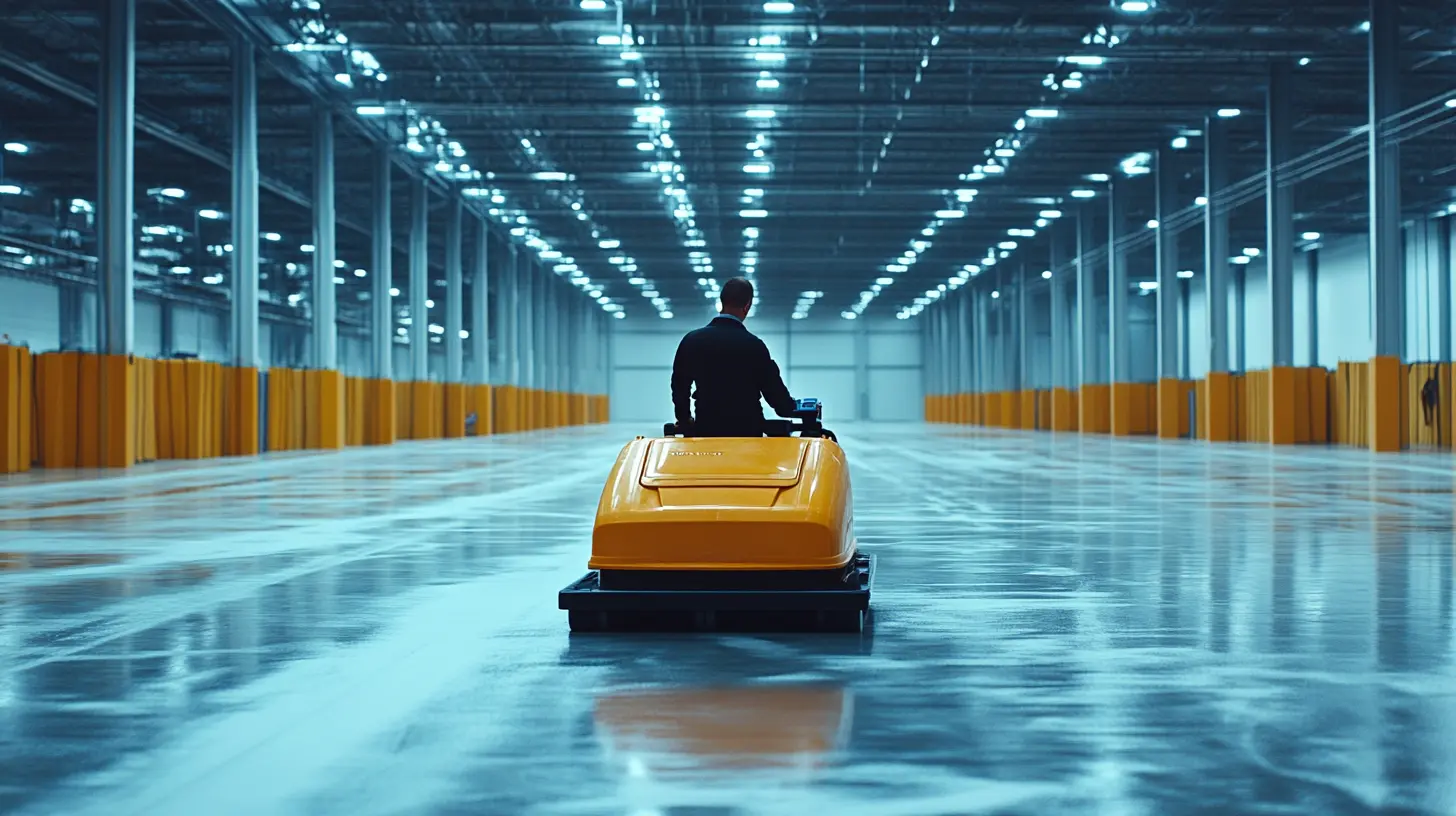
The growing trend of warehouse automation is changing the techniques of cleaning applied therein. Floor scrubber robots are currently adding to increased effectiveness and efficiency in cleaning homes or companies. These machines will spare the sweeper and floor scrubbers for manual use and be diverted to solving more complex jobs better using one's critical thinking and problem-solving skills.
Automation in warehouse cleaning, however, brings in a consistency of operation, which is often lost in the old procedures of cleaning. These floor scrubber robots will clean the entire floor of a warehouse, corner by corner, work through complicated layouts, and navigate obstacles. Their work will take much less time without shutting down operations compared to what humans could accomplish. Regular and efficient cleaning helps these robots maintain the standards of hygiene within the warehouse, thus reducing safety risks and creating a healthier environment for workers.
Some of the greatest benefits of floor scrubber robots include provision of cleaner facilities as well as lower running costs over the years. The automation of cleaning will imply that fewer labor costs will be incurred in warehouses and that all the resources previously used for supervision and permission will now be more effectively allocated. In addition, the wear and tear effects would be quite minimised, considering that regular maintenance will be performed instead of neglected maintenance. Indeed, automating warehouse cleaning can offer companies a streamlined operation in line with modern industry standards and productivity.
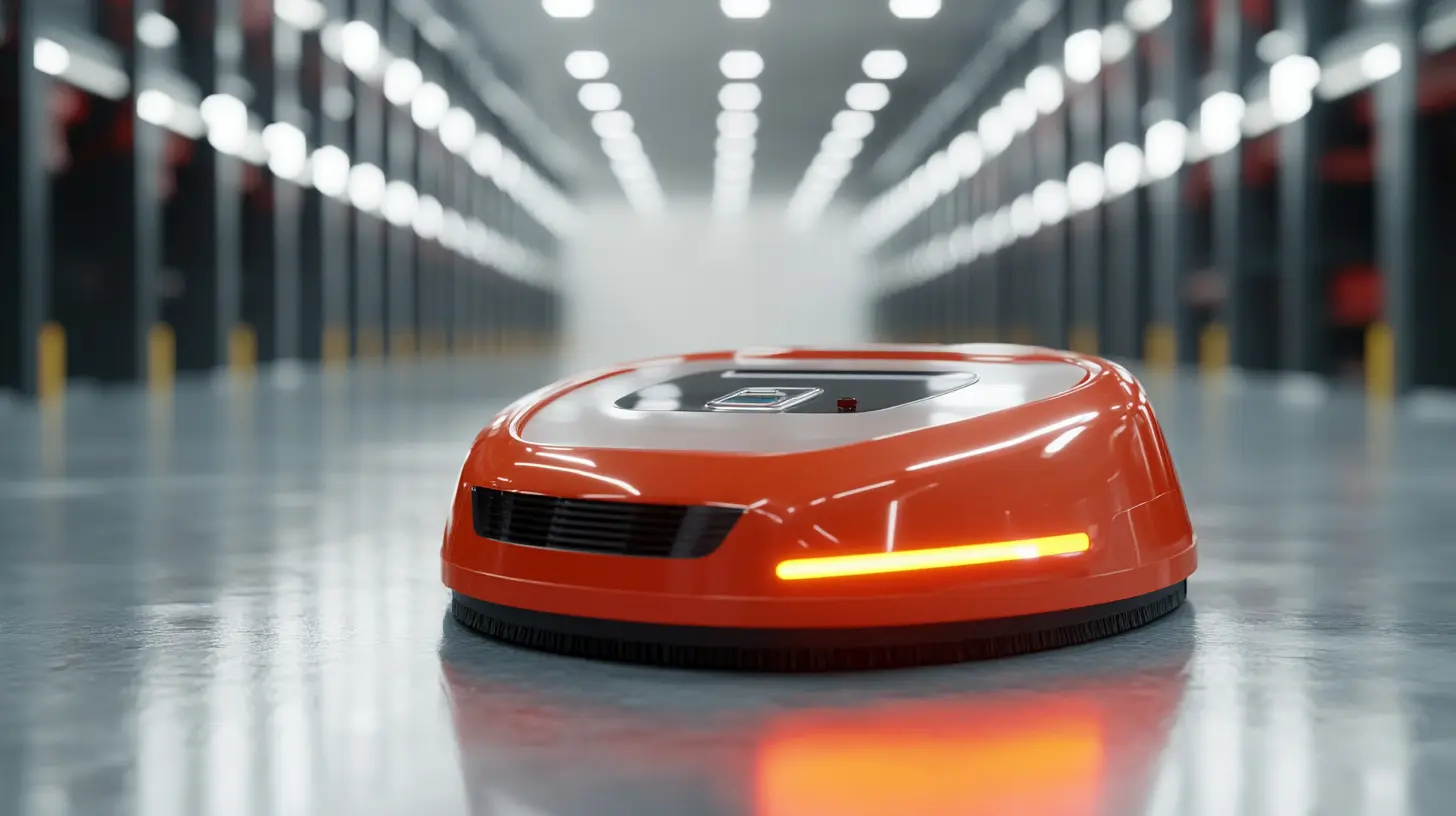
Opting for the perfect floor scrubber robot is the very first major thing to do to help you optimize the operations of your warehouse. According to the current "Warehouse Automation and Robotics Market Report" published by Research and Markets in 2022, more than 23 per cent annual growth is projected for adopting cleaning automated solutions, mainly for efficiency and economy. With an enormous list of cleaners available and knowing the cleaning requirements of your warehouse, you can select the right scrubber robot.
Things such as floor type, area to be cleaned, and traffic operation should be taken into account. A hard surface cleaning robot will be most suited for smooth concrete floors in a warehouse, but if there are multiple surfaces, a multi-surface scrubber will save you time and be cost-effective over time. Likewise, robots that boast superior navigation technologies can also enhance the potential of cleaning efficiency, as per a study from the International Journal of Robotics Research published in 2021, which stated that such automated robots can improve by nearly 50 per cent the time taken between manual methods compared to when cleaning by robot.
Incorporate intelligent functions like real-time monitoring and scheduling on your floor scrubber robot, and you will meet a better impact. According to an IDC report, IoT capabilities in cleaning tools will enhance operating productivity by more than 15%. This investment not only streamlines cleaning but also keeps the warehouse clean, and subsequently, will improve its safety standards and operational effectiveness.
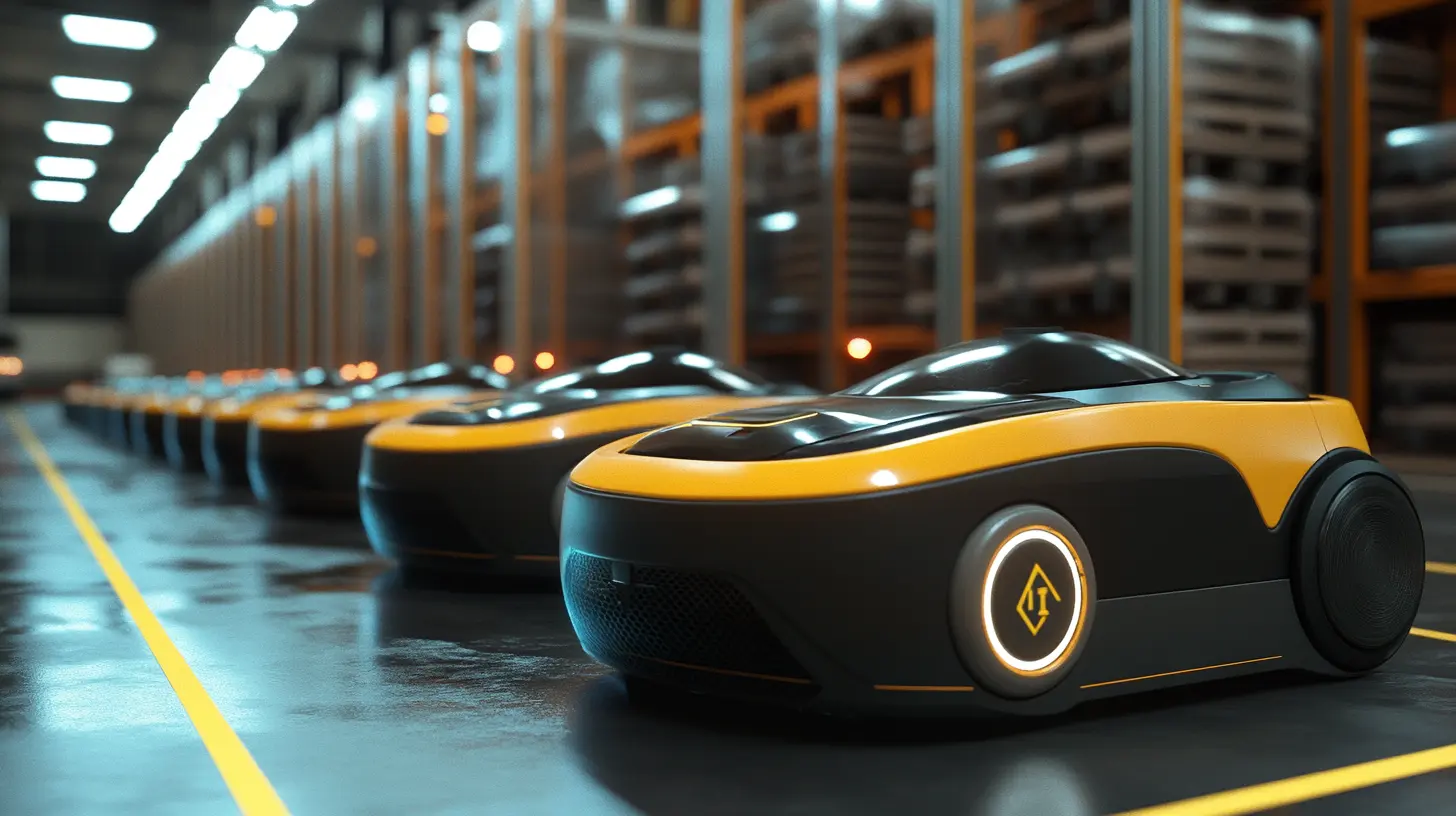
Indeed, proper maintenance of floor scrubber robots shall be observed to maintain their performance and longevity amid dynamic activity such as that in warehouses. High technologies operate best when standard structures are incorporated into their routine practice. As a matter of best practices, a weekly inspection helps catch faults like wear and tear, brush, filter, battery, etc., in good performance levels. Cleaning up the sensors and navigation systems of the robots will enhance accuracy and operational effectiveness, as long as it will reduce downtime and improve cleaning efficiency.
Another crucial area of maintenance would be software updates. Most current floor scrubber robots come equipped with advanced artificial intelligence and learning capabilities, which can help them increase their performance over time. Regular software updating will ensure that your robot has the latest algorithms to use when planning a route and detecting obstacles. Further, training of personnel on the proper ways to use and maintain such equipment would limit damage and guarantee consistency in performance.
A scheduled maintenance plan sort of highlights the periodic maintenance activities and monitoring guidelines. Such an effect of a proactive approach not only increases robot lifespan but also brings them in line with industry regulations and guidelines. By following those best practices, an organization will derive the most from a floor scrubber robot while providing a clean and safe working environment for its employees in the warehouses.
The ongoing operational efficiency within modern warehousing has been as significantly impacted by floor cleaning robots. However, the extent of the resulting effectiveness would depend upon their finer understanding and well placement with the industry standards that relate to safety and compliance in the entire company. Organizations that harmoniously combine such orientations with corporate practice would undoubtedly build longer lifecycles and more effective returns on their robotic investments while protecting the lives of their employees.
Safety regulations are carved to cater to the nexus of operation of floor-scrubbing robots. Such machines employ advanced techniques to get dirt off, but they also easily create hazardous conditions to operate if not according to predetermined safe conditions. Continued staff training on recognition and mitigation of possible risks is important. Areas in training should include operation techniques, emergency procedures, and maintenance requirements for safe and effective usage.
Legal implications are avoided through adherence to industrial regulations; safety culture is also stimulated in an organization. Warehousing companies should keep abreast with the current, topical, and evolving regulations released by the governing bodies as these usually change with technology. Regular audits would help ascertain that floor-cleaning robots meet the requirements on these standards while revealing areas for improvement, as well as reinforcing the best practice. Such organizations can therefore maximize the fullest gains from the use of floor scrubber robots by upholding safety and compliance levels.
Achieving cleanliness has become paramount in almost all sectors, but it has been the high-end warehousing that has generated plenty of interest in solutions for cleaning as a recent development. Smart technologies have given rise to the introduction of floor scrubber robots toward improved scrubbing efficiency. These robots are designed to be self-navigation and intelligent adaptation according to different environments and conditions to perform other activities other than cleaning.
Robotic scrubbers are some of the trendiest innovations in the cleaning of buildings. Still, they are now available with more advanced features supplementing the range of cleaning applications. Improving the overall cleaning efficiency seems to be the goal that seems to be pursued by most companies to date. Their scrubbers indeed include the state-of-the-art sensor as well as AI intelligence making it the next step in optimizing cleaning operations. Using the sensor, AI, and intuitive floor-cleaning robot scrubber for dirt, robots will learn to adjust scrubbing patterns based on the floor type and amount of dirt and thus help in wasted resources minimization and cleanliness improvement.
More so, consumer expectations are evolving, so manufacturing companies are putting more resources in research and development to make more intelligent cleaning equipment. The users want a machine that can scrub the floor and relays real-time information on cleaning performance and maintenance, unlike before. This would not only create a good user experience but also satisfy the real need for effective and sustainable cleaning in the commercial environment-enhanced by technology. Thus, with improved technological equipment, the way warehouses would clean can be brought up to industry standards and kept in line with the best operational standards.
It becomes important to train the staff on collaborating with the floor scrubber robots for enhancing maximum productivity along with a smooth workflow in warehouses. With automation being part and parcel of almost every daily operation, employees need to learn how to work with machines rather than regard them merely as replacements for human workers. Such a mindset shift is essential because it creates an environment where both human and robotic efforts complement each other's work.
Training staff on the capabilities and limits of floor scrubber robots is one more aspect of training. Staff should be informed about specific functions performed with such machines, including cleaning schedules, obstacle navigation, and reporting faults, among other things. With this knowledge, employees can help out when necessary and effectively intervene when the robots fail to carry out their missions. Furthermore, such training may have a practical approach that will help to keep employees getting accustomed to the new technology by overcoming the fear of working alongside a robot.
Designing a culture of communication is equally important to ensure successful collaboration. Employees need to be motivated to share what they are going through regarding the floor scrubber robots with one another. Subsequently, regular meeting sessions can be scheduled concerning performance, challenges, and improvements. Such open communication increases efficiency in operations and identifies potential training needs or further skills development opportunities for staff so that the humanoid-robotic team always works best with each other.
The advent of floor scrubber robots in warehouses, therefore, presents a crucial consideration for companies looking to improve efficiency, understanding ROI. The launch of advanced cleaning robots constitutes a landmark exploration of automation used to create modern warehousing, which can now reap the benefits of superior technology. As prices have come down and capabilities increased, the time has come for companies to consider in earnest the economic aspects of these robots.
While the initial investment in scrubber robots incurs a considerable dent in the wallet, they actually facilitate extensive savings in the long run. These robots, thereby increasing efficiency in cleaning, will serve to lower the operating costs by reduction of labor. And the other way they save a lot is they are independent; cleaning is done when it should be independently, keeping up cleanliness and safety standards in the warehouse. Particularly considering a competitive atmosphere, this speaks a lot for hygiene and sanitation marking the satisfaction of employees and the impressions on customers.
With that in mind, in a technological revolution, these early adopters of automation are likely to prolong their advantages. Introducing intelligent cleaning solutions boosts productivity while sustaining environmental responsibilities through more rational resource management. Therefore, assessing the ROI of floor scrubber robots is paramount for logistic and warehouse operators striving for success in an ever-more automated future.
Essential maintenance practices include conducting regular inspections to check wear and tear, ensuring brushes, filters, and batteries are in optimal condition, and keeping sensors and navigation systems clean.
Keeping the software updated is important because it allows the robots to use the latest algorithms for efficient route planning and obstacle detection, improving overall performance.
Businesses can ensure longevity by developing a scheduled maintenance plan that outlines routine tasks and monitoring strategies, and by conducting regular audits for compliance with industry standards.
Staff training should focus on the proper operation techniques, emergency procedures, maintenance requirements, and understanding the robots’ capabilities and limitations to work effectively alongside them.
Safety regulations help mitigate risks associated with the operation of floor scrubber robots, ensuring safe and efficient use to protect employees and extend the functionality of the robots.
Communication is vital as it allows employees to share experiences and insights, helps in identifying challenges, and fosters a culture that enhances operational efficiency and skills development.
Regular audits can ensure that floor scrubber robots meet safety standards, help identify areas for improvement, and reinforce best practices within the organization.
Training empowers employees to assist robots when necessary, reduces apprehension about working alongside them, and ultimately maximizes productivity and workflow efficiency.
Staying updated with industry regulations is important to avoid legal repercussions, foster a safety culture, and ensure that robotic investments are functioning optimally and compliant with the latest standards.
Fostering a culture of collaboration enhances the synergy between human and robotic efforts, leading to improved operational efficiency and making it easier to address performance challenges and develop staff skills.
